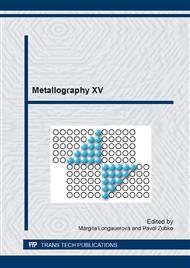p.607
p.611
p.615
p.619
p.623
p.629
p.635
p.641
p.645
Archaeometallurgical Simulations of the Processes in Bloomery Furnaces from the Hallstatt and Medieval Period
Abstract:
Bloomery furnaces were the first units for iron smelting. In the Hallstatt period small bowl-type furnaces were used and until the medieval period the size of such furnaces was increasing continuously. Experimental archaeologists reconstruct bloomery furnaces to study the processes of bloom production. In a small bowl-type furnace (Hallstatt period) at Asparn and in a larger shaft-type furnace (medieval period) at Ybbsitz smelting experiments were performed, The samples contained metallic iron and slag. Various amounts of iron in different stages of conglomeration up to larger iron pieces were found. The slag belongs to a fayalitic-type, consisting of wustite (FeO), fayalite (Fe2SiO4) and glass-phase (amorphous Ca-, Al-silicates) in various concentrations. The yield of metallic iron was highly different for the various experiments. In general, more metallic iron was formed in the larger shaft-type furnaces. A large bloom was not obtained.
Info:
Periodical:
Pages:
641-644
Citation:
Online since:
April 2014
Keywords:
Price:
Сopyright:
© 2014 Trans Tech Publications Ltd. All Rights Reserved
Share:
Citation:


